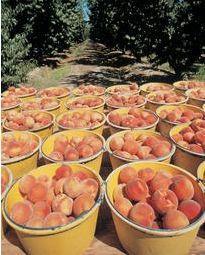
US stonefruit has moved closer to gaining access to the Australian market, with a Biosecurity Australia (BA) final report issued last week authorising imports under a fumigration protocol to safeguard against the risk of spotted-wing drosophila (SWD), or vinegar fly.
The US came very close to gaining Australian market access for stonefruit in 2010, but was inhibited by the detection of SWD in key growing regions that year. As well as postponing a decision on admitting stonefruit, the Australian Quarantine and Inspection Service (AQIS) halted all imports of California table grapes.
It was subsequently a highly challenging season for West Coast fruit exporters, who along with SWD had to cope with the detection of European Grapevine Moth (EGVM). Both pests threatened the state’s produce industry and limited access to vital foreign markets.
BA’s new report identifies a methyl bromide fumigation protocol currently approved as effective against SWD for imports of peaches and nectarines, but does not extend this to other stonefruit.
While this represents a step closer to US stonefruit imports, it still awaits approval for US growers and exporters who are unlikely to be happy with BA’s stipulation as fumigation is costly, discolours produce and reduces its shelf-life.
Should the fumigation protocol be accepted, AQIS would also have to establish a satisfactory inspection plan to ensure the fruit has been treated in accordance with these requirements.
As US stonefruit imports now wait on approval from these two groups, there are strong hopes among Australian import companies that they will be bringing in at least some fruit this season, according to an industry source.



